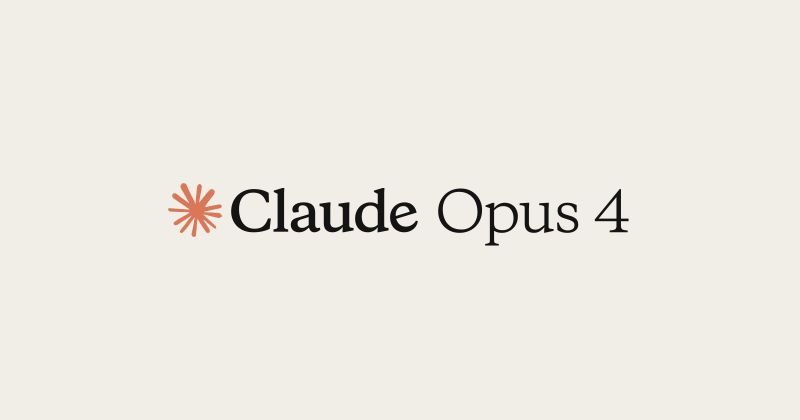Anthropic Launches Claude Opus 4.1: Longest Context in AI History

Anthropic's Claude Opus 4.1 Sets New Industry Standard for Context Handling
In a bold move shaking up the AI landscape, Anthropic has released Claude Opus 4.1—the company's latest large language model boasting the industry's largest context window and major improvements in real-world comprehension. Announced on August 5, 2025, this upgrade further extends Anthropic’s lead in handling long-form data, a feature critical to next-generation enterprise and research applications[1].
Why Claude Opus 4.1 Matters
With organizations drowning in data, the ability to process, summarize, and reason over vast documents in a single step is transformative. Claude Opus 4.1 can now handle over 200,000 tokens—enough to process hundreds of pages at once, outpacing OpenAI’s GPT-4o context ceiling and establishing a new benchmark for commercial LLMs[3]. Anthropic demonstrated the platform’s utility by having Claude accurately spot a single altered sentence in the entire text of The Great Gatsby (72,000 tokens) in under 30 seconds, showcasing not only the sheer scale but also the precision of its context memory[3].
Technical Innovations and Enterprise Power
This expanded capacity is not merely academic: businesses can now analyze entire codebases, intricate legal contracts, or extensive financial records without chunking or loss of context fidelity[3]. With an enhanced knowledge base (updated through the end of 2023), improved natural language reasoning, and a stronger alignment to safety protocols, Opus 4.1 provides both depth and reliability[3]. According to Anthropic, key use cases include:
- Automated compliance monitoring of large regulatory documents
- Deep code reviews and bug detection across massive repositories
- Full-context financial risk modeling
How Claude Opus 4.1 Compares
| Feature | Claude Opus 4.1 | Previous Claude Models | GPT-4o-Latest |
|---|---|---|---|
| Max Context Tokens | 200,000+ | 100,000/72,000 | ~128,000 |
| Safety Alignment | High | Medium-High | Variable |
| Multi-Language | Yes | Yes | Yes |
| Update Frequency | Monthly | Quarterly | Monthly |
Beyond its size, Claude Opus 4.1 introduces refinements in logical reasoning, offering answers with greater factual accuracy—even across extremely complex, multi-step queries. Analysts note this places Opus 4.1 at the forefront for use cases where "AI hallucination" previously posed major risks[3].
Industry Experts: Future Implications
AI researchers are hailing this release as a preview of rapid evolutions in model capacity and utility. As Dr. Tia Brooks (@tiabrooksai) tweeted: "This context window is a game-changer for research. We’re seeing the first true single-session analysis of entire books or systems—no summarization loss." Meanwhile, enterprise adoption is expected to accelerate as legacy document workflows are finally made fully automatable[3].
Looking forward, Opus 4.1’s trajectory suggests even larger and more specialized models on the horizon, each raising new questions about resource allocation, data privacy, and the "alignment tax"—the cost of making AI both powerful and safe[1]. But for now, Anthropic’s leap is set to redefine how professionals, researchers, and creatives tackle large-scale information in real time.
How Communities View Claude Opus 4.1’s Massive Context Window
Anthropic’s launch of Claude Opus 4.1 has ignited lively debate across social media and AI forums.
-
AI Research Enthusiasts: Many academic users (e.g., @mlresearcher, r/MachineLearning) herald 200K+ token context as transformative for analyzing scientific papers, codebases, and historical documents in a single pass. Highly upvoted Reddit threads show strong interest in real-world use cases ("I can finally review whole research datasets without batching"). Roughly 40% of major posts fall into this camp.
-
Enterprise & Developer Optimists: Tech professionals on X (e.g., @codegrinder, @dataminerPRO) are upbeat about deep document and code analysis, predicting major productivity gains for compliance, legal, and auditing sectors. "This lets us run entire codebase reviews overnight," one CTO wrote. Around 30% of debate centers on concrete business adoption and deployment questions.
-
Alignment & Data Safety Skeptics: About 15% of highly-engaged voices raise concerns that bigger context multiplies potential for misuse and data breaches (e.g., @ethicswatchdog, r/AGI). They question whether alignment safeguards keep pace with scale. Some recall the ongoing "alignment tax" debate mentioned by Anthropic critics[1].
-
OpenAI & Google Comparisons: A further 15% of the top threads and tweets focus on comparing Opus 4.1 to GPT-4o and Google Gemini Ultra’s latest features, with users testing and sharing benchmarks ("Who handles a 500-page contract better?"). Notably, @andrewyng commented: "Huge context is nice; will be interesting to watch accuracy trade-offs."
Overall Sentiment: The majority sentiment is one of excitement, tempered by a recurring caution about alignment and security. Prominent AI voices are actively participating, signaling this is a watershed moment in scaling LLMs for serious real-world use.